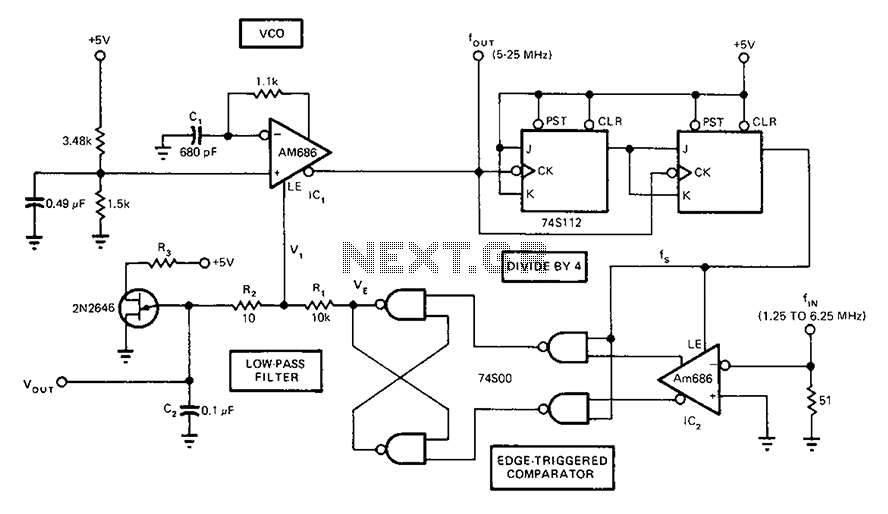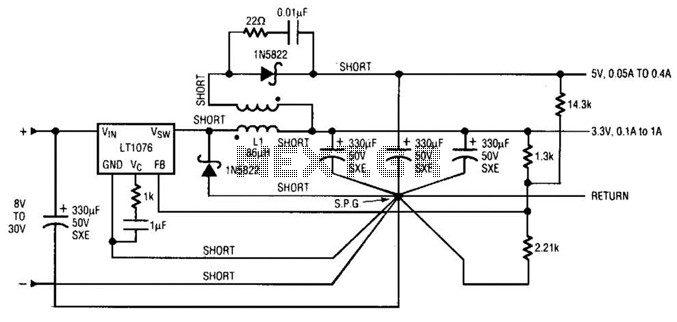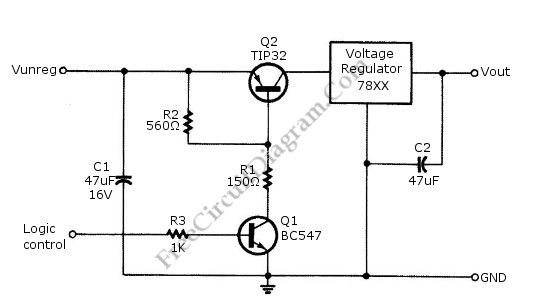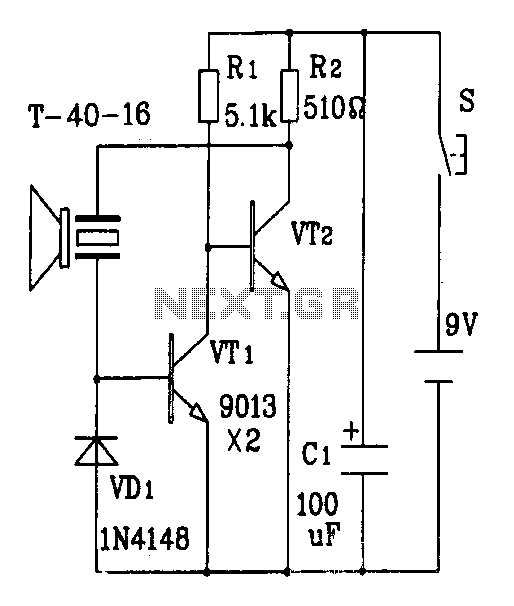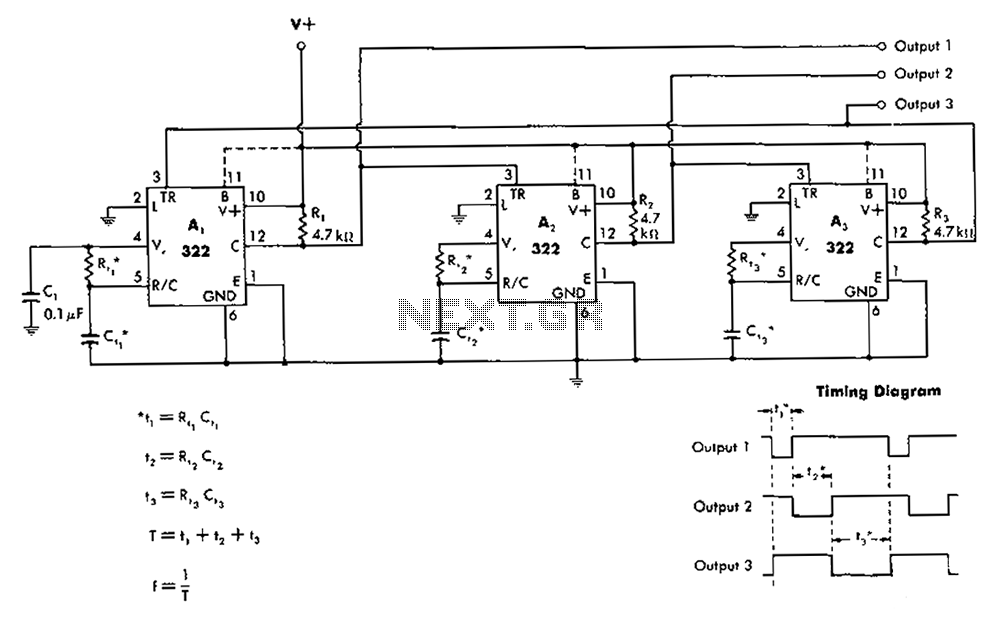
High voltage generator excitation set overvoltage protection circuit
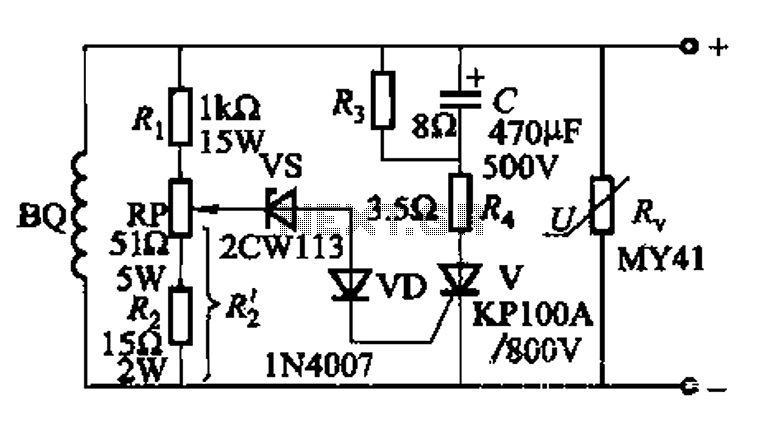
The DC voltage for the generator field winding is supplied by a three-phase thyristor rectifier. In instances of incorrect operation, phase misalignment, or system failure, the rectifier may generate hazardous conditions, leading to over-voltage insulation issues on the DC side of the field winding. To mitigate the risk of over-voltage, a protection circuit is typically employed, as illustrated in Fig. 13-90. In this configuration, BQ represents the excitation windings, while the varistor R serves as a backup over-voltage protection element.
The described circuit employs a three-phase thyristor rectifier to convert AC voltage into DC voltage for the generator's field winding. This conversion is critical for maintaining the operational integrity of the generator, as it ensures that the excitation system receives the necessary voltage to function effectively. However, the reliance on thyristors introduces potential risks, particularly during abnormal operating conditions such as phase imbalances or system failures.
In response to these risks, the protection circuit, as depicted in Fig. 13-90, incorporates a varistor, which is a voltage-dependent resistor designed to clamp excessive voltage levels. The varistor operates by transitioning from a high-resistance state to a low-resistance state when the voltage exceeds a predetermined threshold, thereby diverting excess energy away from sensitive components in the circuit. This action prevents damage to the field winding insulation, which could otherwise lead to catastrophic failures.
The excitation windings, represented by BQ in the schematic, are crucial for generating the magnetic field necessary for the generator's operation. The design of the protection circuit ensures that these windings remain operational under varying conditions, thereby enhancing the reliability and longevity of the generator system.
Overall, the integration of a three-phase thyristor rectifier with an effective over-voltage protection scheme is essential for the safe and efficient operation of DC-powered generator systems. The use of components such as varistors plays a pivotal role in safeguarding against voltage surges, ensuring continuous performance and preventing costly downtimes.DC voltage of the generator field winding by a three-phase thyristor rectifier provided later. In the same period incorrect, out of step, system failure, etc., the rectifier wi ll cause hazardous elements and the field winding on the DC side over-voltage insulation, this must limit over-voltage, commonly used as shown in Fig. 13-90 protection circuit. Figure, BQ as excitation windings. Varistor R, as a back-up over-voltage protection element.
The described circuit employs a three-phase thyristor rectifier to convert AC voltage into DC voltage for the generator's field winding. This conversion is critical for maintaining the operational integrity of the generator, as it ensures that the excitation system receives the necessary voltage to function effectively. However, the reliance on thyristors introduces potential risks, particularly during abnormal operating conditions such as phase imbalances or system failures.
In response to these risks, the protection circuit, as depicted in Fig. 13-90, incorporates a varistor, which is a voltage-dependent resistor designed to clamp excessive voltage levels. The varistor operates by transitioning from a high-resistance state to a low-resistance state when the voltage exceeds a predetermined threshold, thereby diverting excess energy away from sensitive components in the circuit. This action prevents damage to the field winding insulation, which could otherwise lead to catastrophic failures.
The excitation windings, represented by BQ in the schematic, are crucial for generating the magnetic field necessary for the generator's operation. The design of the protection circuit ensures that these windings remain operational under varying conditions, thereby enhancing the reliability and longevity of the generator system.
Overall, the integration of a three-phase thyristor rectifier with an effective over-voltage protection scheme is essential for the safe and efficient operation of DC-powered generator systems. The use of components such as varistors plays a pivotal role in safeguarding against voltage surges, ensuring continuous performance and preventing costly downtimes.DC voltage of the generator field winding by a three-phase thyristor rectifier provided later. In the same period incorrect, out of step, system failure, etc., the rectifier wi ll cause hazardous elements and the field winding on the DC side over-voltage insulation, this must limit over-voltage, commonly used as shown in Fig. 13-90 protection circuit. Figure, BQ as excitation windings. Varistor R, as a back-up over-voltage protection element.
